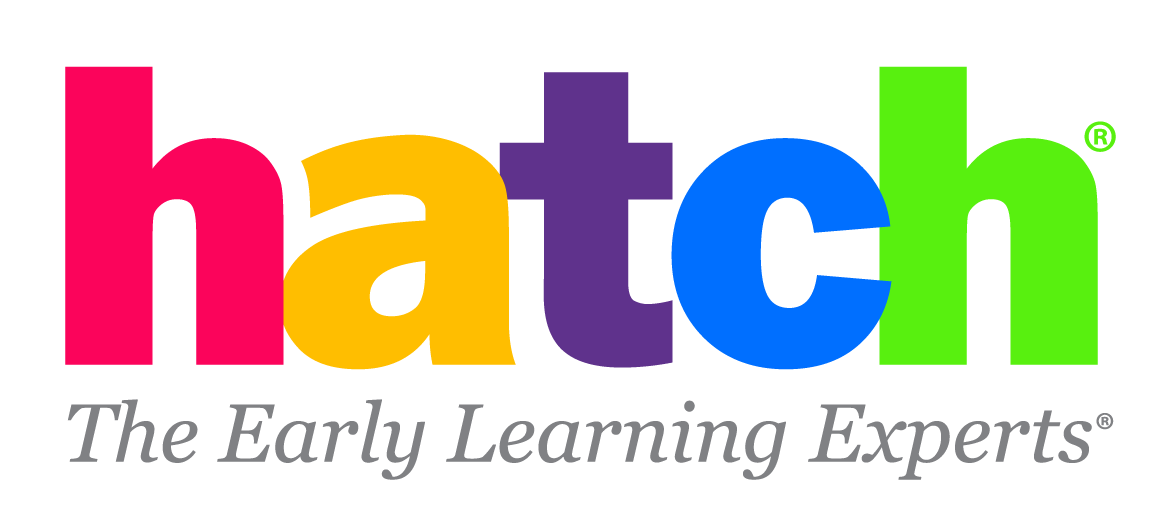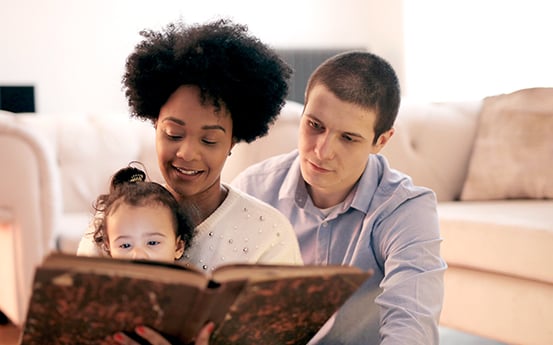Do you remember asking your parents or other family members to tell you a story when you were younger? I sure do! I know my parents can still hear the echo of my whiney plea: “Tell me a story!” That said, the memories created when my family relented and told me real stories about their past, or made-up stories about the future, are among my favorites!
Historians trace storytelling back more than 30,000 years, where even in the earliest civilizations, groups of people would gather to tell oral stories passed down as mythology, cultural beliefs, or family memories. The storyteller and the listeners were physically close, developing a connection to one another through the communal experience. Storytellers reveal and share themselves through their telling, and listeners reveal and share themselves through their reception of the story (Carlson, 2009).
As you share stories with your child, you are supporting the development of vital language skills: listening, vocabulary, expressive language (the use of words, sentences, and writing to convey meaning) and receptive language (the ability to understand language). Strong language skills are essential for children’s success in school and life (Hart & Risley, 2003; Heath & Hogben, 2004; Jalongo, 2008; Kalmer, 2008). You can also boost social emotional learning by how you tell the stories.
Storytelling Tips:
- When you are telling your child a story, model good storytelling by providing lots of details, using good inflection, and incorporating body language/gestures.
- Keep the story narrow in focus; rather than telling a story that takes place over a longer period (days or weeks), tell a story that took place within a few hours – for example, a trip to the store or something funny your family pet did. When the story unfolds over a longer period, it may be hard for your child to focus on the details.
- Whenever possible, maintain eye contact; it will go a long way in keeping your child engaged in the story.
- Add facial expressions! Raise your eyebrows, scrunch your lips, narrow/widen your eyes, nod/shake your head, etc.
- Vary the volume of your voice—increase volume for exciting moments and ‘whisper’ softly for quiet/secretive moments.
- Vary the pitch of your voice—higher pitch for excitement, lower pitch for thoughtfulness or sadness.
- Vary the speed of your telling—faster for exciting moments, slower for thoughtful moments.
- Do not be afraid to tell make-believe stories; in fact, make them up as you go. When you lose your train of thought, ask your child for help.
- Tell stories that center around you and your child’s daily life. Reminiscing about events of the day enables children to tell their own descriptive narratives. Recounting events has been linked to higher self-esteem and a stronger sense of self.
- Tell stories with refrains or dialogues that repeat and can be easily remembered and predicted by children. Examples include “Goldilocks and the Three Bears,” “We’re Going on a Lion Hunt,” “Three Little Pigs,” etc. Invite your child to act out, or make sounds for these parts (i.e., “They walked to the park. Pat your knees and show me how they walked.”). Or, ask your child to add a sound (i.e. “There were some cows nearby. What does a cow say?”).
- Ask questions related to the story that prompt children’s imagination. For example, “Why do you think Goldilocks chose to sleep in the baby bear’s bed?” or “How do you think she felt when she found the perfect chair?”
Take Turns & Expand the Experience
- Invite your child to share a story. He will likely follow the cues you have provided in your own storytelling, so model with care.
- When your child tells you a story, help her expand the story by adding in additional details. This can be done a few different ways: 1) Ask her questions about the story and then have her add these details into her story. 2) Invite her to act out the story with you. 3) Encourage her to draw the story and use the picture(s) to tell you the story. Ask your child to go beyond naming the objects in the picture and to tell you the story with a beginning, middle, and end.
- Encourage your child to tell you a story he has shared before (i.e., “Tell me about the time your teacher introduced the goldfish to your class”).
Oral storytelling provides a rich opportunity for groups of people to reminisce, share cultural folktales, exchange narratives, or create new stories. Storytelling not only enhances developmental skills, but it also creates incredible bonding experiences!
Storytelling connects our past to our present and connects us to one another. Though the days might be busier than they were for our ancestors 30,000 years ago, you, your child, and your family will reap the rewards when you find time to connect through storytelling.

